SUMMARY
VENOM: None
PREVALENCE: Very Common
ACTIVE PERIOD: Active during the day
KEY ID FEATURES: Very slender, large eyes, head larger than the neck, bronze coloration along the back, white belly scales with bright blue markings at the edges of the scales along the side of the body toward the neck
BEHAVIOR: Largely arboreal, will move into 'S' position and bite defensively
SIZE: Medium - 60-100cm
OTHER: Often found at night sleeping in trees
QUICK ASSESSMENT 0-10
GALLERY
IMPORTANT: Many snakes have significant variance in coloration and pattern even within the same species. There can also be extreme differences in appearance from juveniles to adults so it is important to never assume you have properly identified a snake.
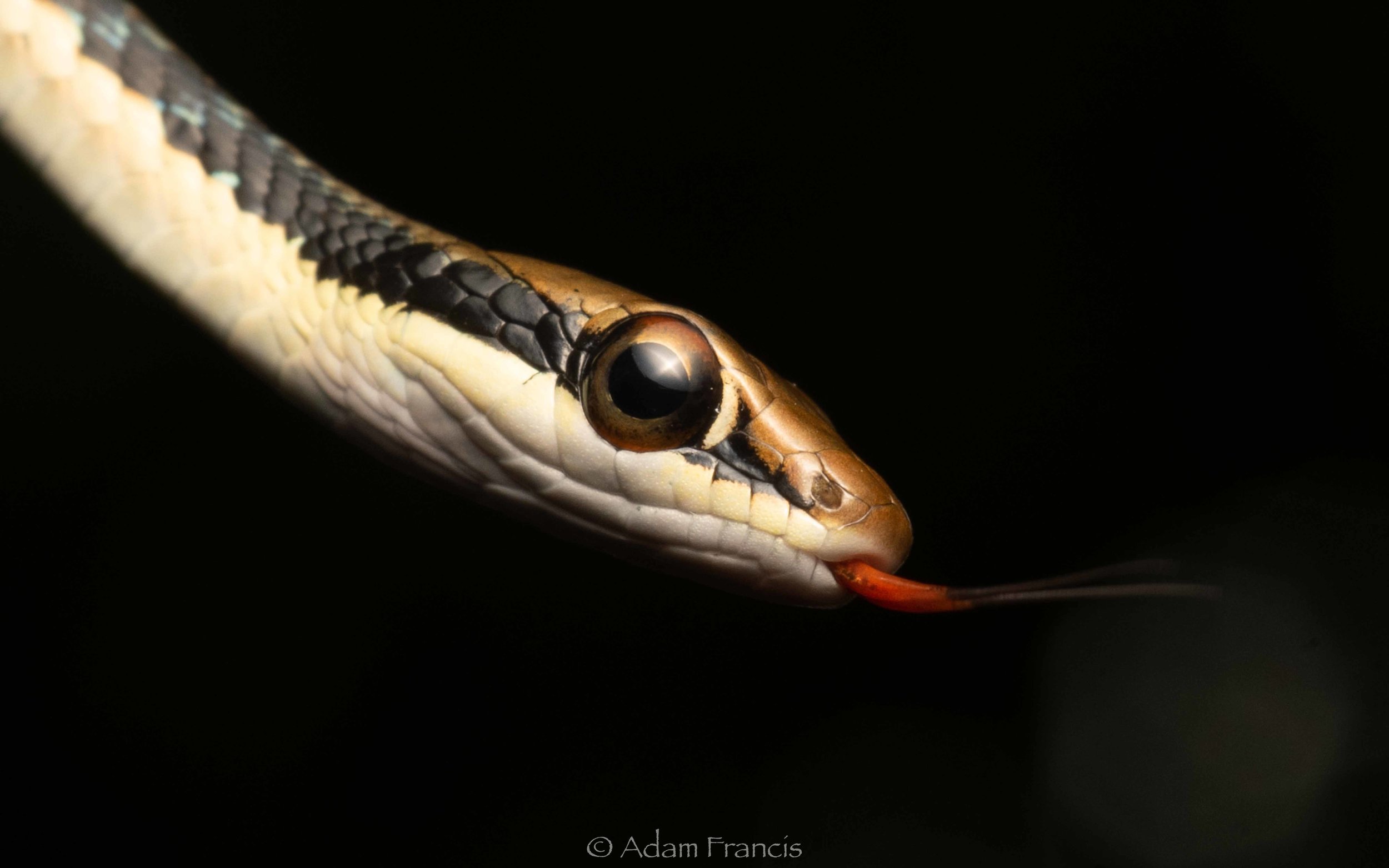
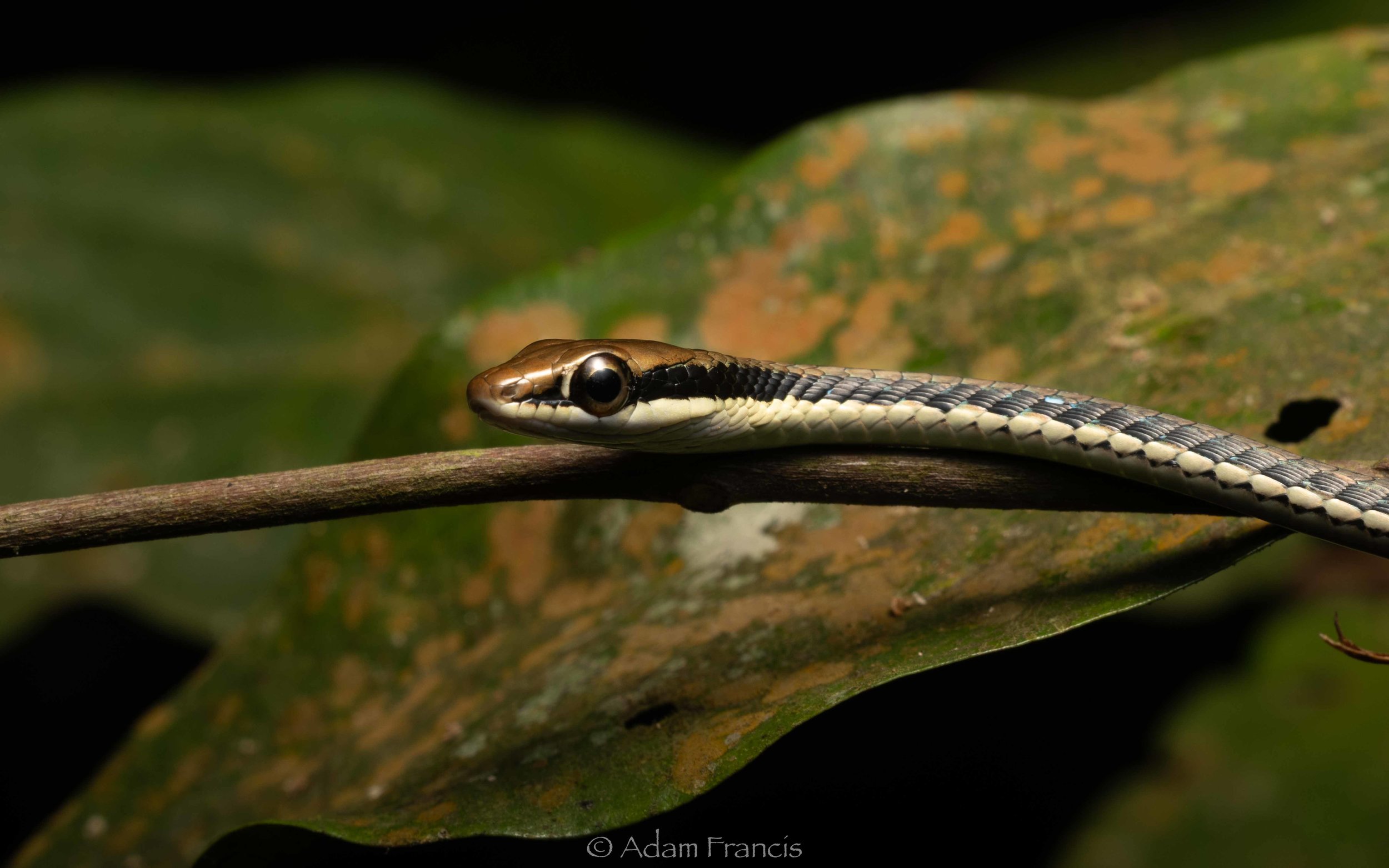
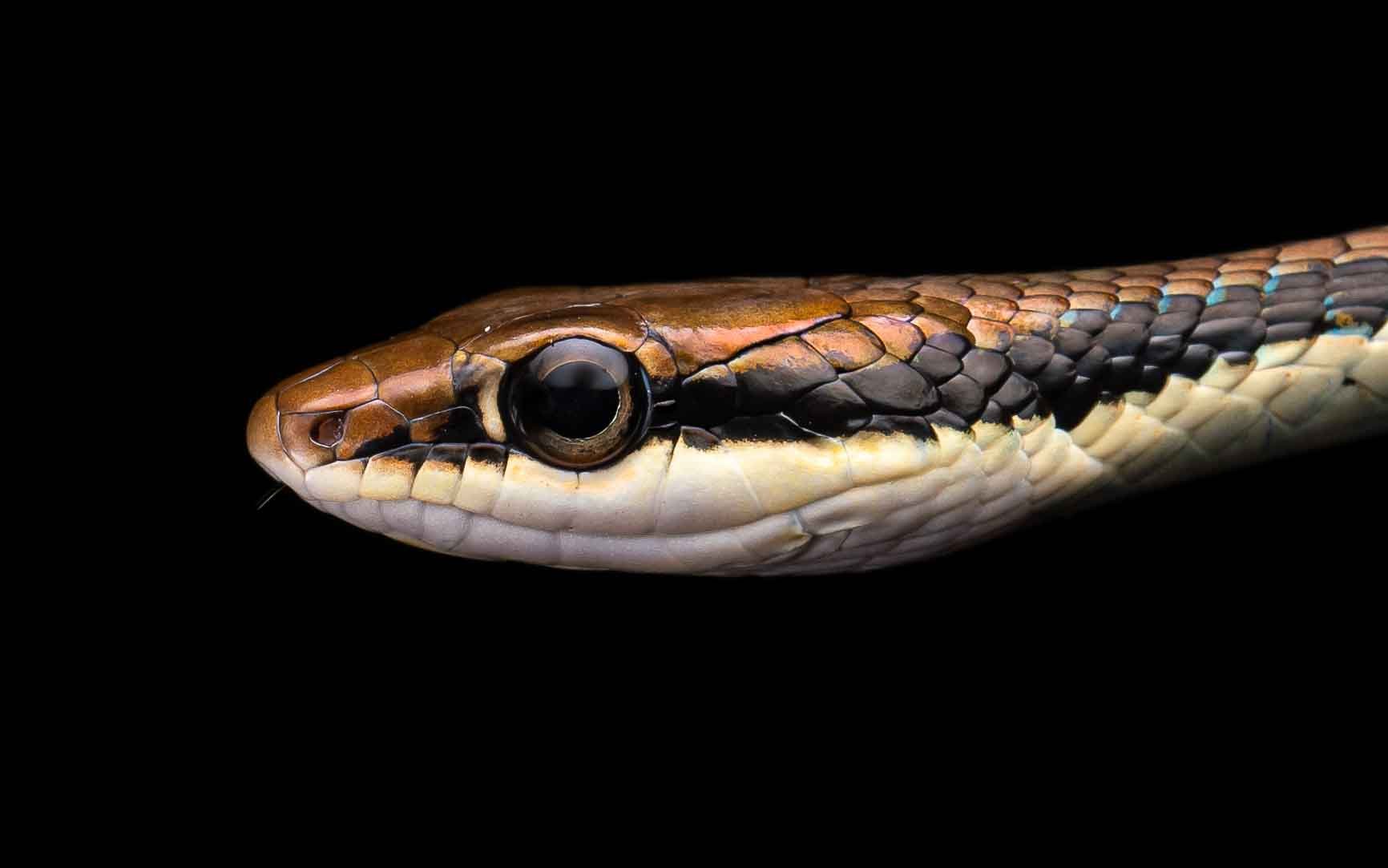
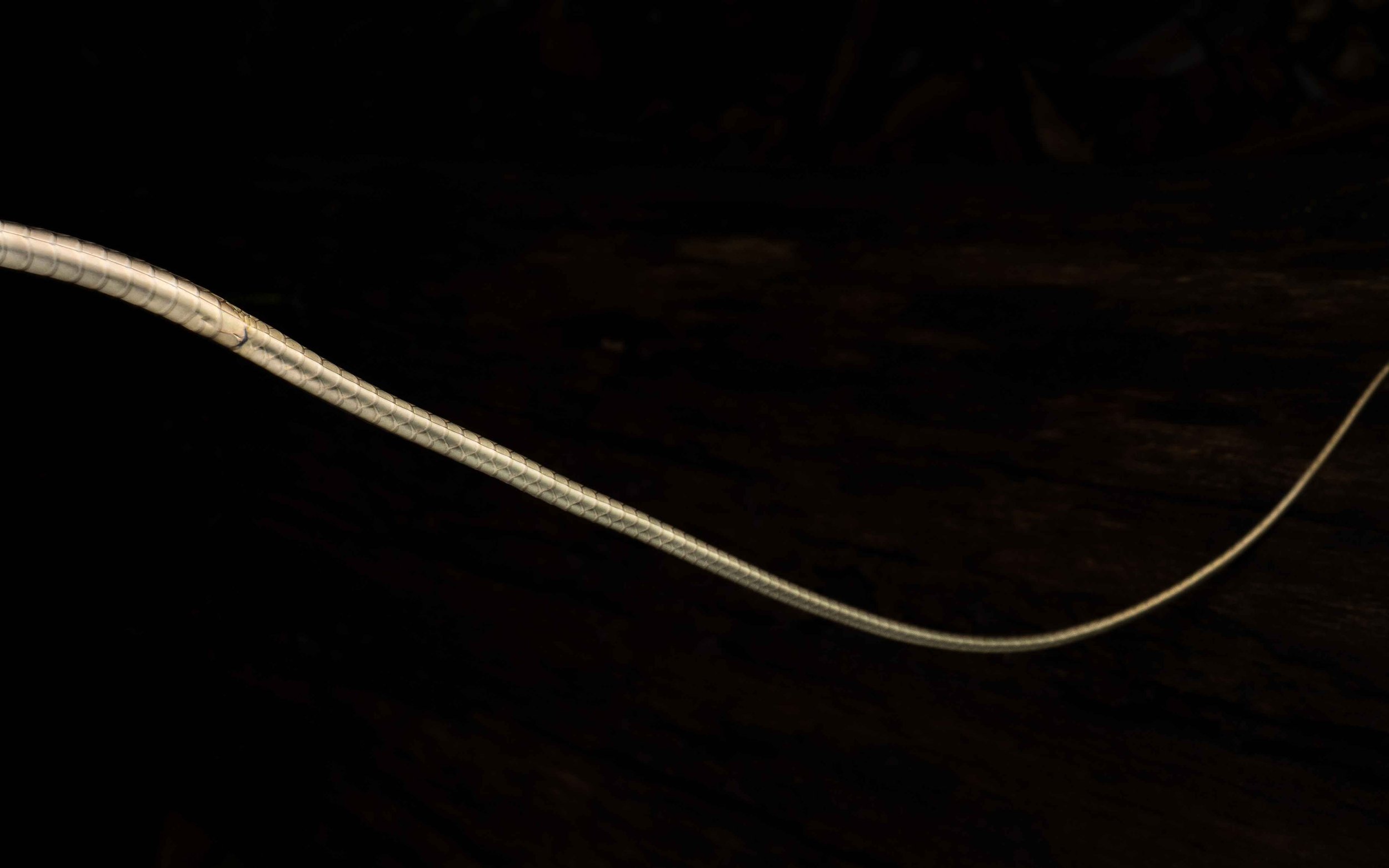
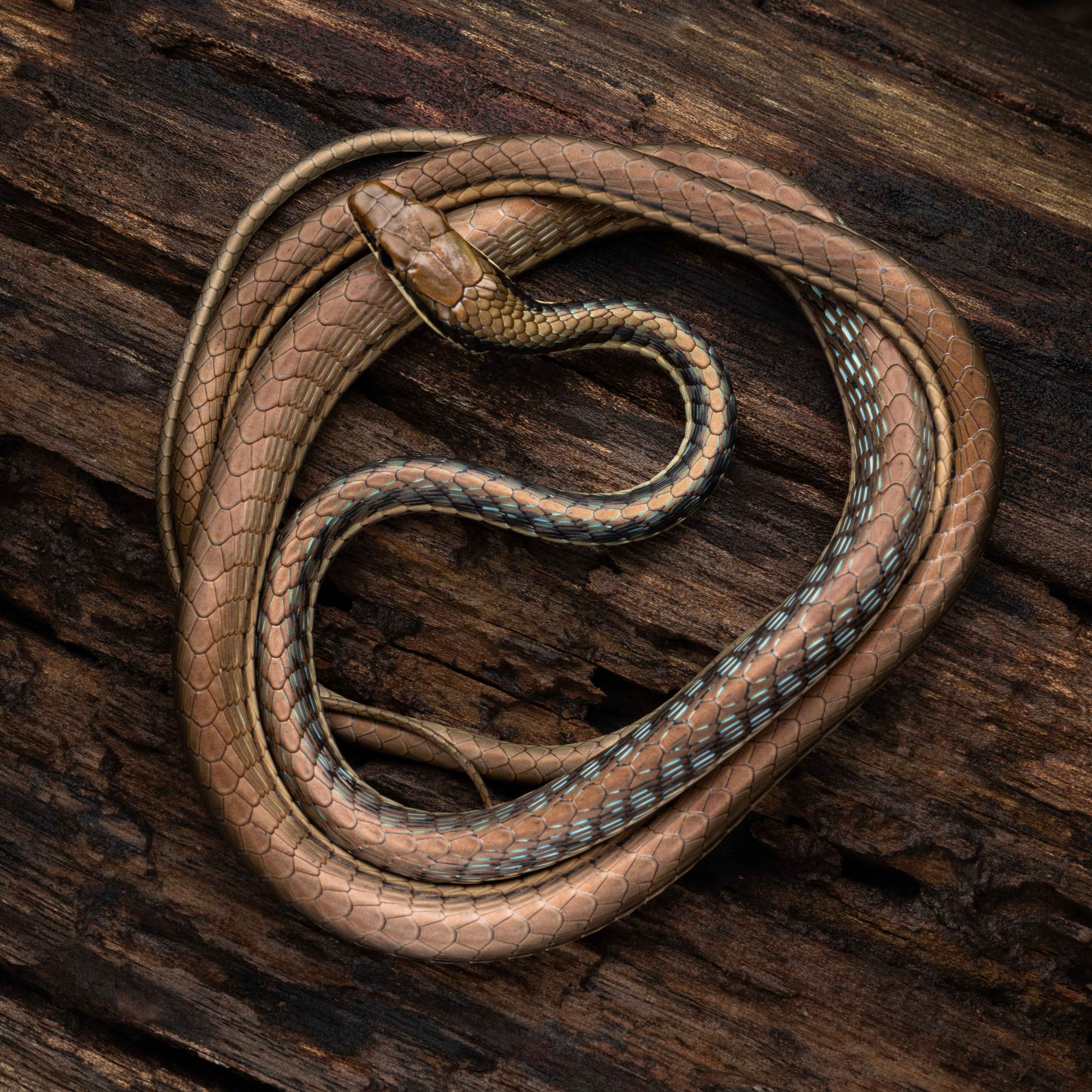
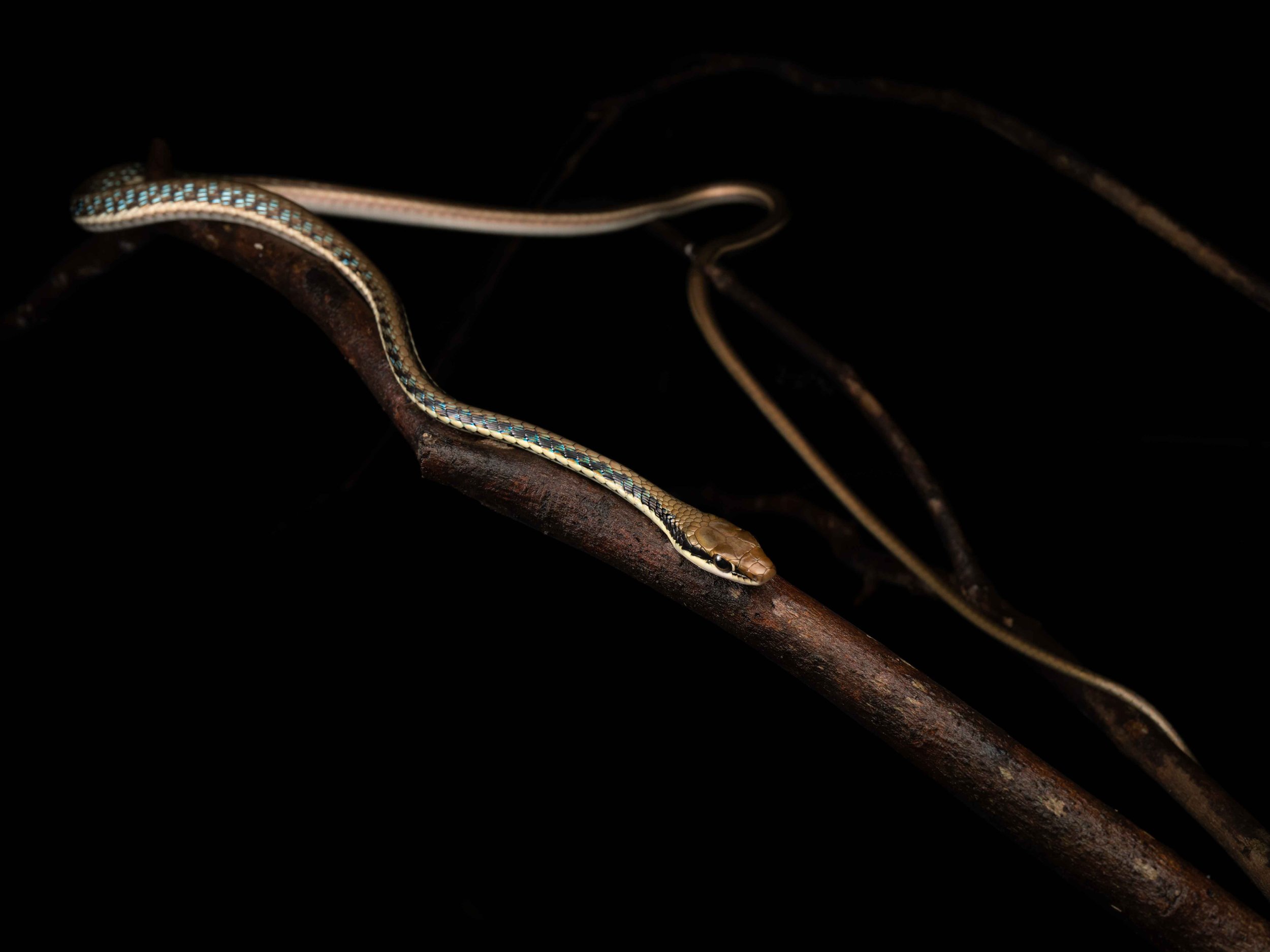


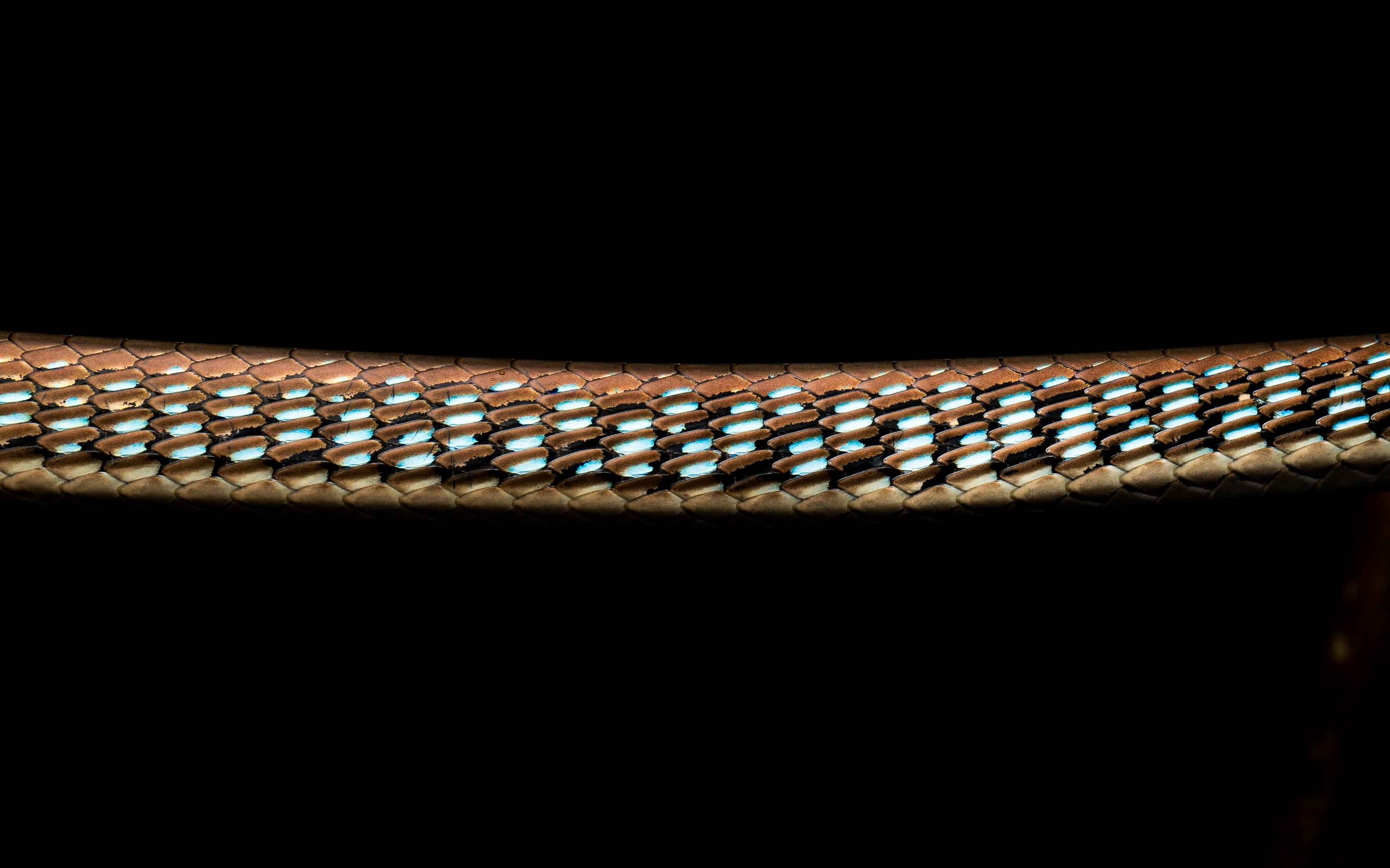
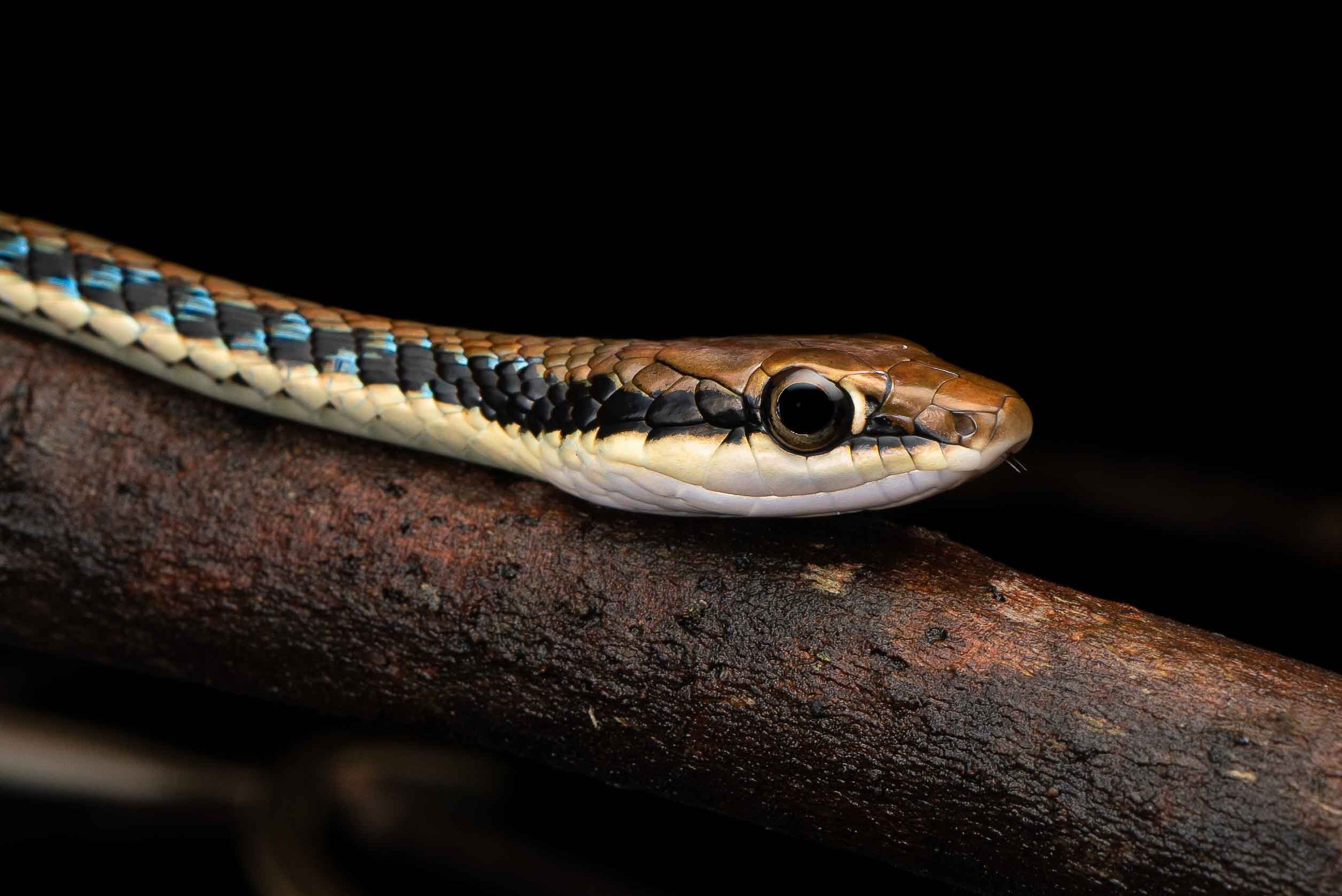
DESCRIPTION
Bronze coloration running from the top of the head all the way down the body through the tail. Yellowish white belly scales. Scales running down the sides of the neck have bright blue edges that show vividly when the snake puffs up in defensive posture. Large head relative to neck, big eyes and characteristic long tail found in many arboreal species. Black stripe run-in from the back of the eye all the way down the side to the tail.
BEHAVIOR
Often found in trees or low bushes but can also be found hunting along the ground during the day. Usually sleeps high up in trees or at the tops of bushes. A relatively inoffensive species may bite if handled but usually quick to calm down.
HABITAT
Due to their largely arboreal nature Painted Bronzebacks are generally found in forested areas, often close to some water source. They have also been observed hunting on the ground for lizards. Also regularly found at forest edges and at varying elevations but generally a lowland species.
MISTAKEN IDENTITY
NO SNAKE SHOULD EVER BE HANDLED BY ANYONE BUT EXPERTS: The Painted Bronzeback is a relatively uniquely patterned snake but is easy to confuse with other species of Bronzebacks. However it is generally not easily confused with local venomous species.

